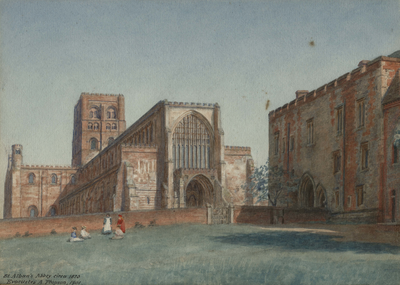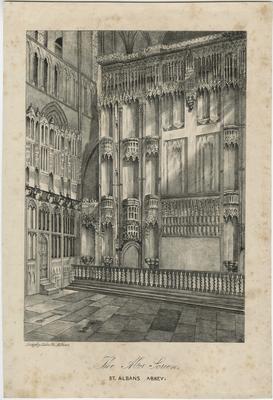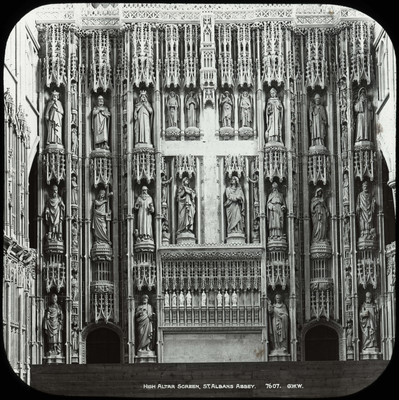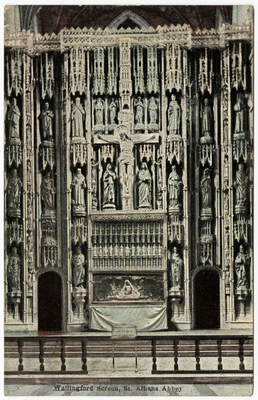
The Cathedral before Grimthorpe’s restoration work (St Albans Museums)
The Society helps stave off disaster
By the early 19th century, the fabric of the Abbey was in a dreadful state. In 1856 Gilbert Scott (later famous for his hotel at St Pancras Railway Station) was appointed Abbey architect. He joined our Society and planned the restoration. Our members raised funds for the work. Much was done including preventing the central tower’s collapse.
Lord Grimthorpe: generous but single-minded
In 1878 Scott died. His place was taken by the wealthy Sir Edmund Becket, better known by his later title, Lord Grimthorpe. He did not join the Society but was determined to leave his mark on the Abbey. The Society’s officials were unable to block his agreement with the Bishop whereby Grimthorpe would pay for the restoration provided he could do whatever he liked.
Lord Aldenham: contentious plans for restoring the High Altar Screen
However, one member of the Society, a wealthy banker, Henry Hucks Gibbs, later Lord Aldenham, controlled the restoration of the Cathedral’s High Altar screen. In the course of time, the statues of saints and holy men that had populated the screen niches had been removed, probably by 16th or 17th century iconoclasts, and some related damage had been sustained. In consultation with Dean Lawrance, Lord Aldenham commissioned new statues to fill those niches.

The High Altar Screen before restoration, with empty niches and an empty cross (St Albans Museums)
Then he turned to the more contentious issue of the cross at the centre of the screen. Where the figure of Christ on the Cross would once have formed part of the High Altar Screen, he wanted to reinstate a large crucifix as the centrepiece.

The High Altar Screen after the installation of new statues, but before the installation of a new crucifix (St Albans Museums)
Crucifixes, forbidden in the Church of England since the Reformation, had become acceptable with the renewed interest in medieval architecture. Grimthorpe hated the idea and took expensive legal action against Aldenham. Dean Lawrance was very much in the middle between the two although his sympathies lay with Aldenham. After a protracted legal battle, which lasted from 1884 to 1899, Aldenham won the lawsuit. England, it is said, cheered and the crucifix was installed.

The finished High Altar Screen, complete with new statues and a new crucifix (St Albans Museums)




